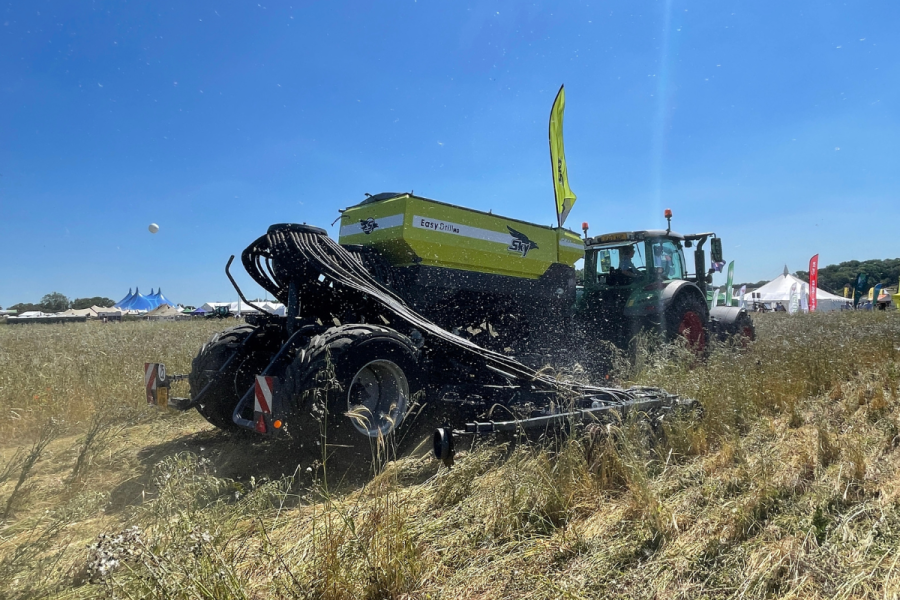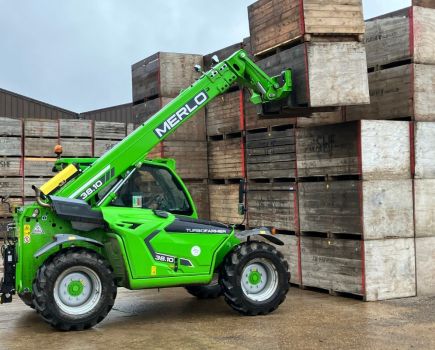Drilling towards healthier soils isn’t just a case of buying a direct drill and cracking on with it, instead it’s a process of change and some soils will always require extra attention. CPM talks through which drill best suits what aim.
If soil organic matter and drainage aren’t right, then there’s not a cat in hell’s chance of direct drilling successfully.
By Melanie Jenkins
It might have been the format of a lifetime’s work for many farmers but the days where most soils are heavily cultivated year in, year out are likely numbered. Unless soils are capable of self-structuring, working towards establishing crops with a tine or disc drill is the way forward, according to Chris Martin of Agrovista.
“To achieve minimal soil disturbance and tackle grassweed issues, many farmers will want to aim towards using a disc drill, but they’ll almost certainly have to go on a journey to get there.
“Industrial agriculture over the past 70 years has involved lots of cultivations and depended on applications of nitrogen fertilisers, meaning soils are depleted of organic matter and it’s this that allows drills to work in difficult soils,” he explains.
Although certain soil types will always require some degree of cultivation, the drive towards minimal soil disturbance is something that can be hard to ignore, says Chris. “For many farmers the ultimate aim is to try to create minimal soil disturbance by only using a disc drill, but this can be very hard to get right on most soil types. It’s a stepping stone journey to get there.
“A lot of soils require their natural structures to be rebuilt before we can turn to minimal disturbance, unless you’re working with a forgiving soil type,” he says.
“But it’s not just about improving the organic matter, field drains will also require attention to stop compaction, poaching and soil erosion. If soil organic matter and drainage aren’t right, then there’s not a cat in hell’s chance of direct drilling successfully.”
Successful drainage starts from the soil surface downwards, so if there are restrictions to the free passage of water or root development, these barriers must be removed with deeper loosening of the soil before the journey to direct drilling can begin, explains Chris. “It’s equally important not to create these issues in the first place, so using the principles of controlled traffic and controlled pressure farming are essential.”
For soils where the process of improving organic matter and drainage is still ongoing, using a tine drill can be more forgiving, explains Chris. “The soil biology needs air to function and most people at the start of the journey to direct drilling will have a chemical imbalance – such as very high magnesium or calcium levels – in their soils, meaning they should invariably start with a tine drill or a cultivator in front of a disc drill. This will have to be the case until there’s good working biology in the soil.”
And it’s not just isolated pockets of soil which are chemically imbalanced but a large proportion of UK soils, according to Chris. “Combine this with horrible weather and poor organic matter contents to buffer these issues and the soil will require air to get into it somehow,” he advises. There’s probably only a handful of soils in the UK that could go directly from heavy cultivations to using a disc drill successfully.”
But a potential problem with disc drills is that their geometry causes soil compression, says Chris. “If farmers do go into difficult soils with a disc drill a single disc coulter can be more forgiving than a double disc as the latter will smear both sides of the slot and increase the risk of hair pinning, leading to poor crop establishment.”
A sensible approach is to alter the type of cultivation geometry on the soil, he explains. A disc cultivator would be ideal for a tine drill and a shallow tine cultivator would be the perfect partner before a disc drill.
And this leads into residue management, he adds. “This will start with the combine and straw chopper. Farmers want a good, even, fine chop to minimise the risk of hair pinning happening with disc drills.”
In Chris’ opinion, for those going down the direct drill route, the ideal situation is to keep both a tine and disc drill on farm. “If your ultimate aim is to direct drill, selling off a lot of your cultivation equipment could help finance this, meaning it’s not crazy expensive to buy two drills. The tine drill will get air into the soil, help you establish cover crops or those which need help with rooting, like oilseed rape and beans, and can get onto soils later in the season than a disc drill. And then you can drill cereals with the disc drill.”
Looking at cultivator drills, Chris feels these are still very good options. “If using one of these, growers can make more of doing less cultivations before them. A cultivator drill can also give growers a degree of flexibility as they can be used as direct drills by disengaging some of the cultivation elements when conditions are suitable.
“The Horsch Pronto and Väderstad Rapid have good cultivation systems and the seed depth is perfect on them, there just needs to be enough tilth around the seed for it to germinate,” he explains. “And cultivator drills are very good at doing this, it’s just that we often over-cultivate in front of them.”
And then there’s the power harrow combination drill. Though Chris understands it still has a place on some farms, he believes the days of it being widely used as a means to get on in conditions no other drill could cope with should be at an end.
The exception to this is on sandy soils, he says. “A shallow plough on sandy soils followed by a one pass power harrow combination drill is still as good as anything as this type of soil will never self-structure.
Chris feels that the power harrow combination drill is a victim of its own success. “Farmers can use them to force in a crop late in the season in wet years as they will work in any conditions. But this can be at a huge cost to soil health leaving soils anaerobic and dead. To a regen farmer, combination drills are the devil as the power harrow kills worms and unnaturally beats up the soils.
“But if you’re growing potatoes or other root crops, or a one-man-band working light sandy soils, ploughing and then using a combination drill has its place.”
A strip till drill can also be a good option in the right situation, particularly for those wanting to start the journey from intensive cultivations towards direct drilling, says Chris. “The issue with these is that the tillage is so intensive in that strip that it can undo the natural fissures and cracks in the soil. Essentially, a strip till drill can undermine the foundations of the house if you go deep with them. So they really have to be used at the right depth and require a lot of attention to detail.”
All drills have their pros and cons, admits Chris. Below are some of his recommendations.
Sky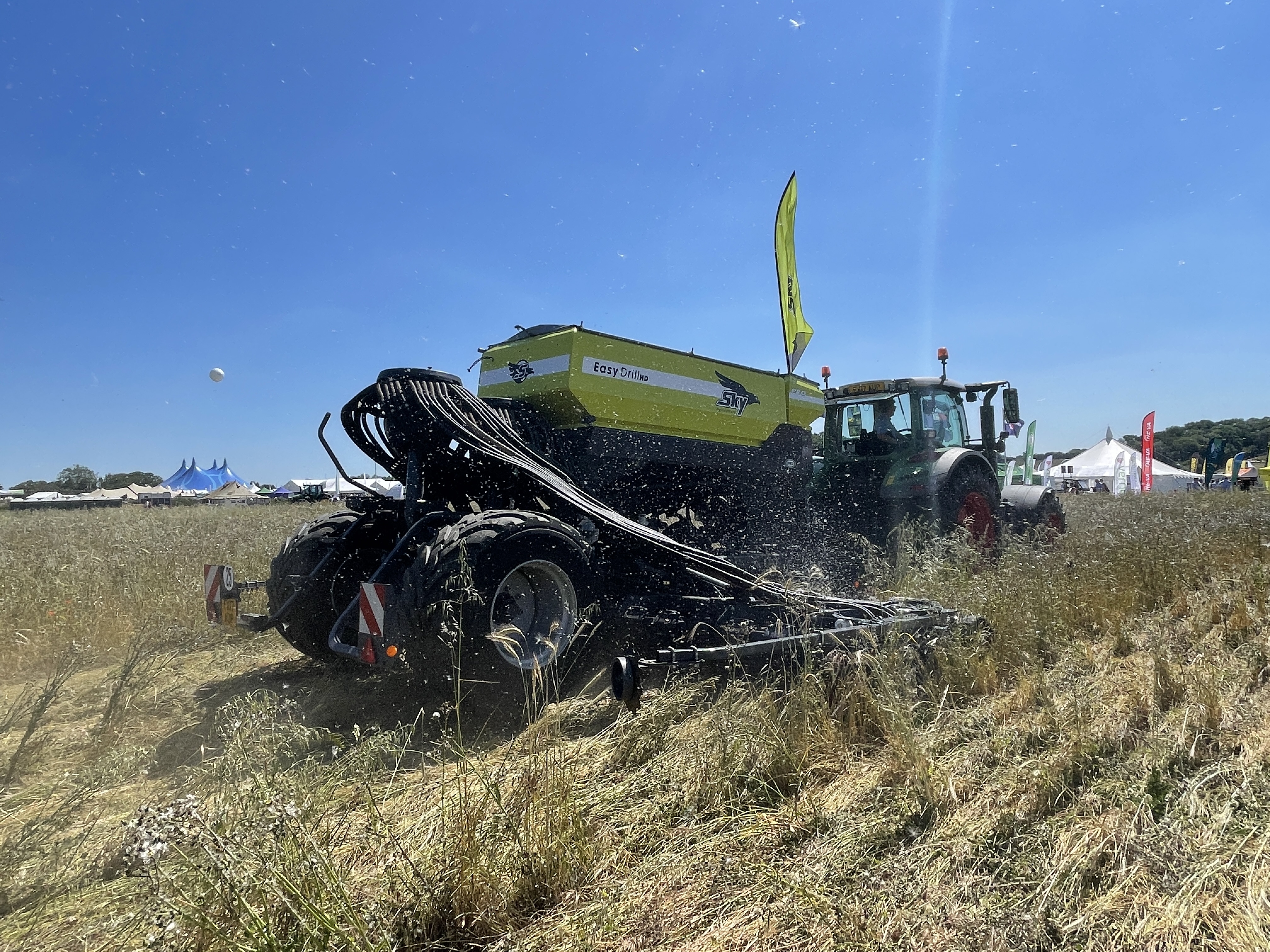
Sky produces both the EasyDrill and the MaxiDrill. The EasyDrill is available as either a pneumatic or gravity fed direct drill. Available in working widths from 3-8m, a 6m EasyDrill typically takes 200hp to pull. The MaxiDrill is designed as a high speed trailed minimum tillage drill and is available in 3m, 4m and 6m working widths – with or without fertiliser.
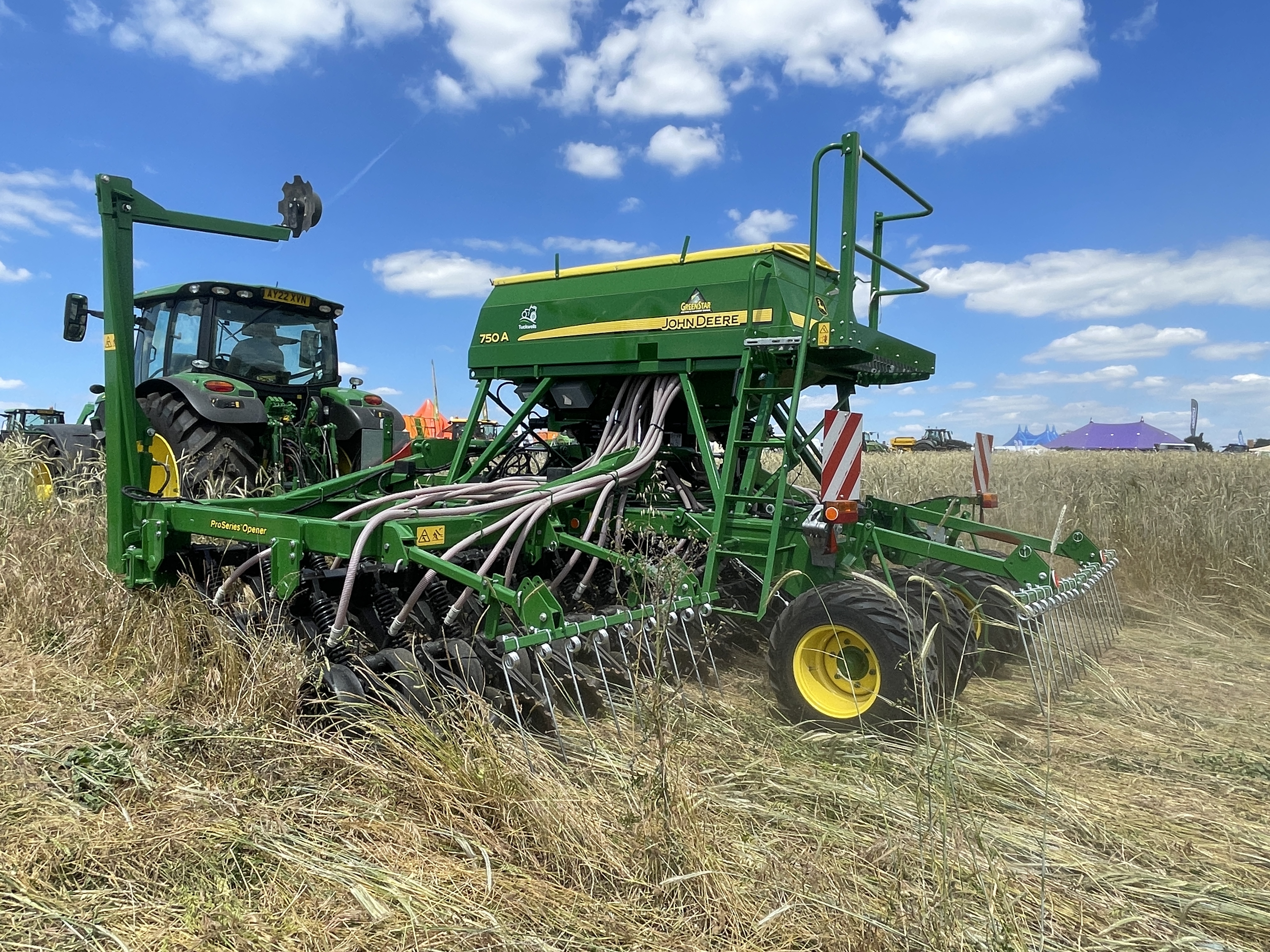
John Deere 750A
“The John Deere 750A is one of the most popular drills and has been around for a long time now.” This drill has single-disc openers, with the 457mm disc set at 7˚ to create a clean slot and minimise soil disturbance and has a low horsepower requirement.
Horsch Avatar![]()
“The Horsch Avatar is another very popular disc drill,” says Chris. Horsch has a specially designed single disc coulter for the Avatar which can be adapted to most sowing conditions, according to the company. It’s designed to remove residues from the furrow to improve seed-to-soil contact.
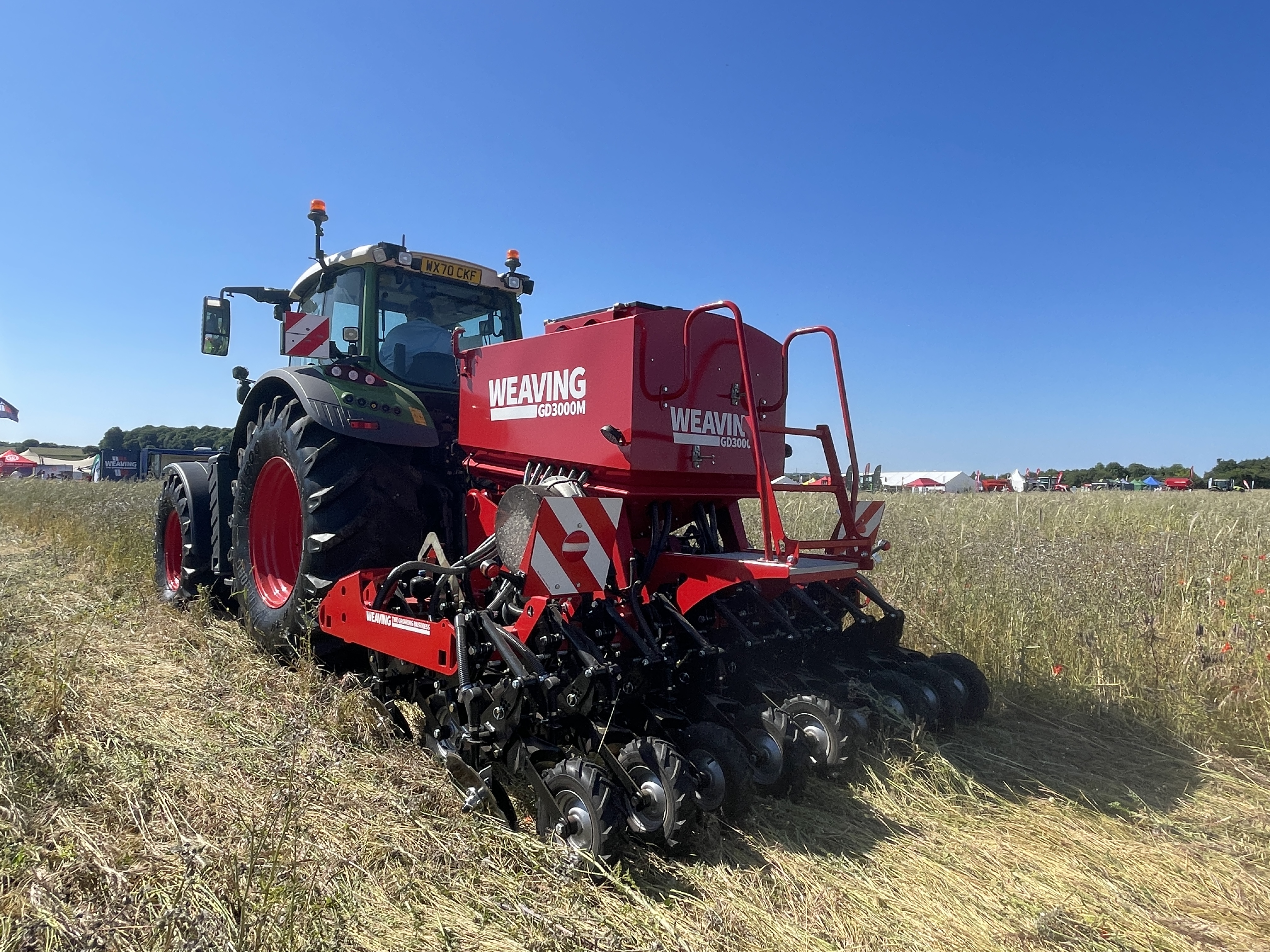 Weaving GD
Weaving GD
“The Weaving GD is better than others disc drills at closing the slots,” explains Chris. “But in strong soils in difficult seasons the seed tries to grow up the crack left by the angled coulter, rather that straight up and can lose all its energy in doing this.”
Available as a mounted or trailed drill, this is a low disturbance machine with an individual coulter pressure system allowing for up to 200kg per coulter on the mounter version and 300kg on the trailed.
Moore Unidrill
“This is one of the simplest drills,” says Chris. With close row spacings, the Moore grassland and arable Unidrill is designed to achieve one pass seeding into grass or cereal stubbles. It has 32 rows at 90mm close spacing disc seed coulters. Seeding depth is controlled by the off-rear packer roller and seeding coulters can be totally suspended off the ground with all the weight on the packer roller, or all weight can be put on the discs to provide up to 94kg per coulter with an empty hopper.
Novag T-ForcePlus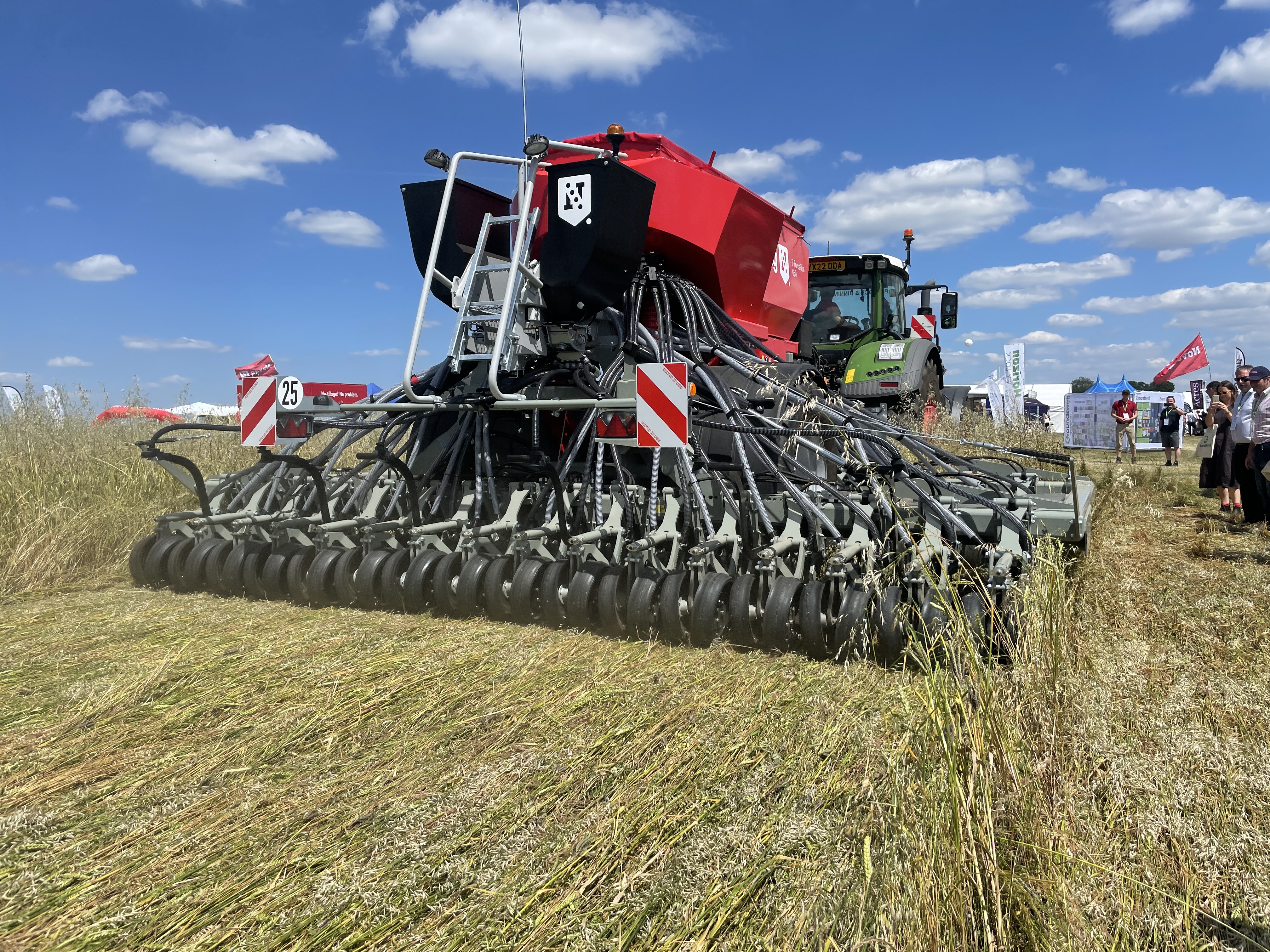
The Novag is a hybrid drill that has a disc and tine working together, he explains. “Hybrids are very good, but the downside is that they’re very heavy and need a lot of horse power to pull them. But they have a narrow fan club who do like them. They also place seed and fertiliser on ledges next to one another and produce a great seed depth.”
The T-ForcePlus can apply 100-500kg of downforce on each opener with its hydraulic cylinder and has fully adjustable seeding depth of 0-10cm.
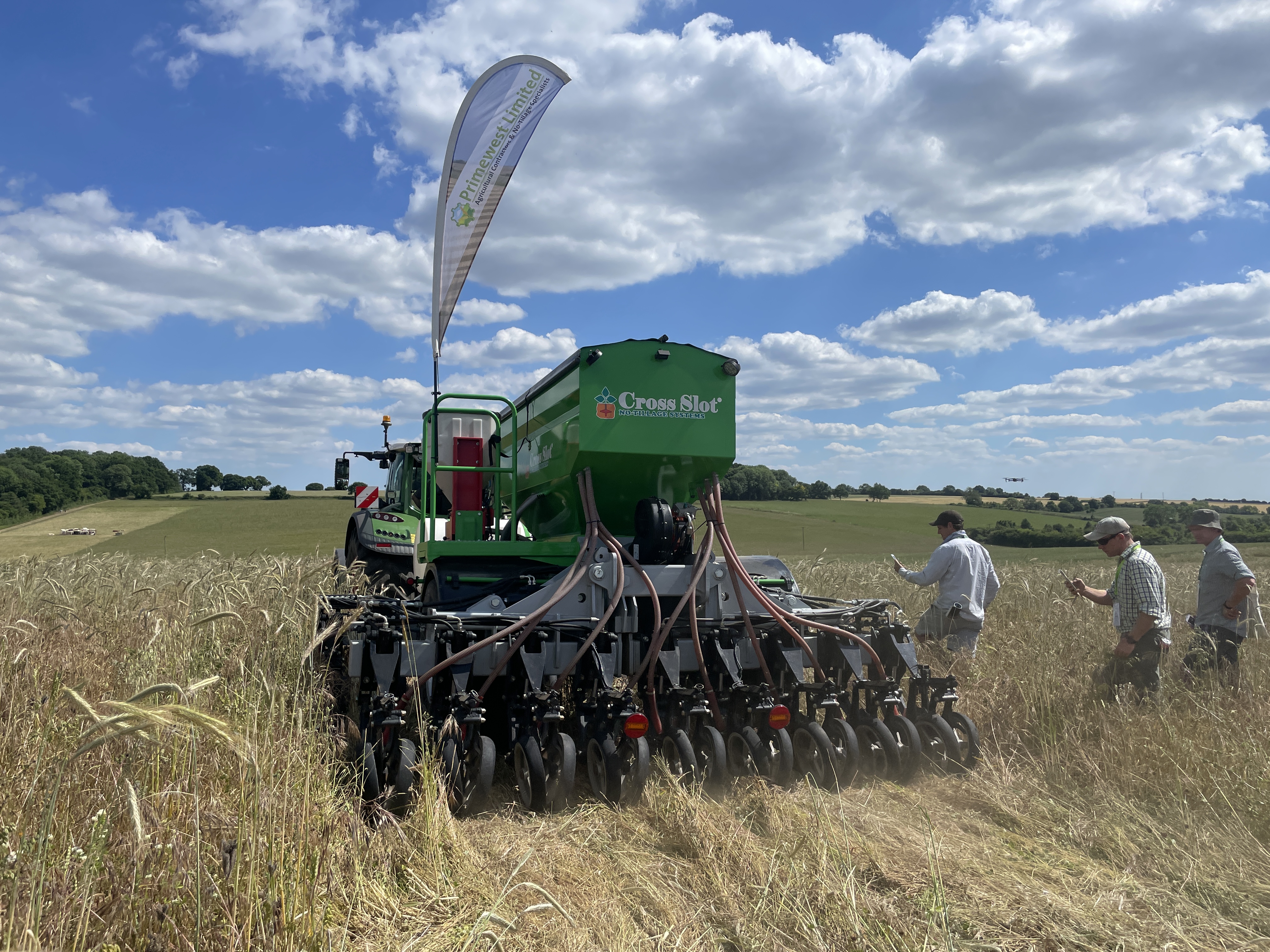
Cross Slot
The Cross Slot is another hybrid option, says Chris. This drill is designed to not block in crop residues and minimise soil and crop residue disturbance, while automatically adjusting downforce to match soil harness. It creates a horizontal rather than vertical seed slot and can band sow fertiliser simultaneously with the seed.
Triton
“The Triton can work deeper than it places the seed, allowing soil loosening and improving localised drainage in a single pass,” says Chris.
This drill doesn’t use a press, packer or separate roller to consolidate soil. It’s a non-inversion, low disturbance drill which uses seeding blades to cut open the soil. Seeds are placed on a terrace which is split to either side by a soil interrupter and splitter bar. The splitter bar then becomes the stage one side-press, pressing the seed and soil mixture securely onto the wall of the seeding terrace.
Amazone Cayena
“The Amazone Cayene is an alternative hybrid where a disc and tine can be engaged in the same line,” says Chris. “This opens the disc directly in line with the tine, so it’s in the same cultivation zone for minimal disturbance. The advantage of this is that air gets into the soil.”
The Cayena tine coulter trailed seed drill is designed for fast sowing on hard, dry and stony soils with or without prior soil tillage.
Horizon DSX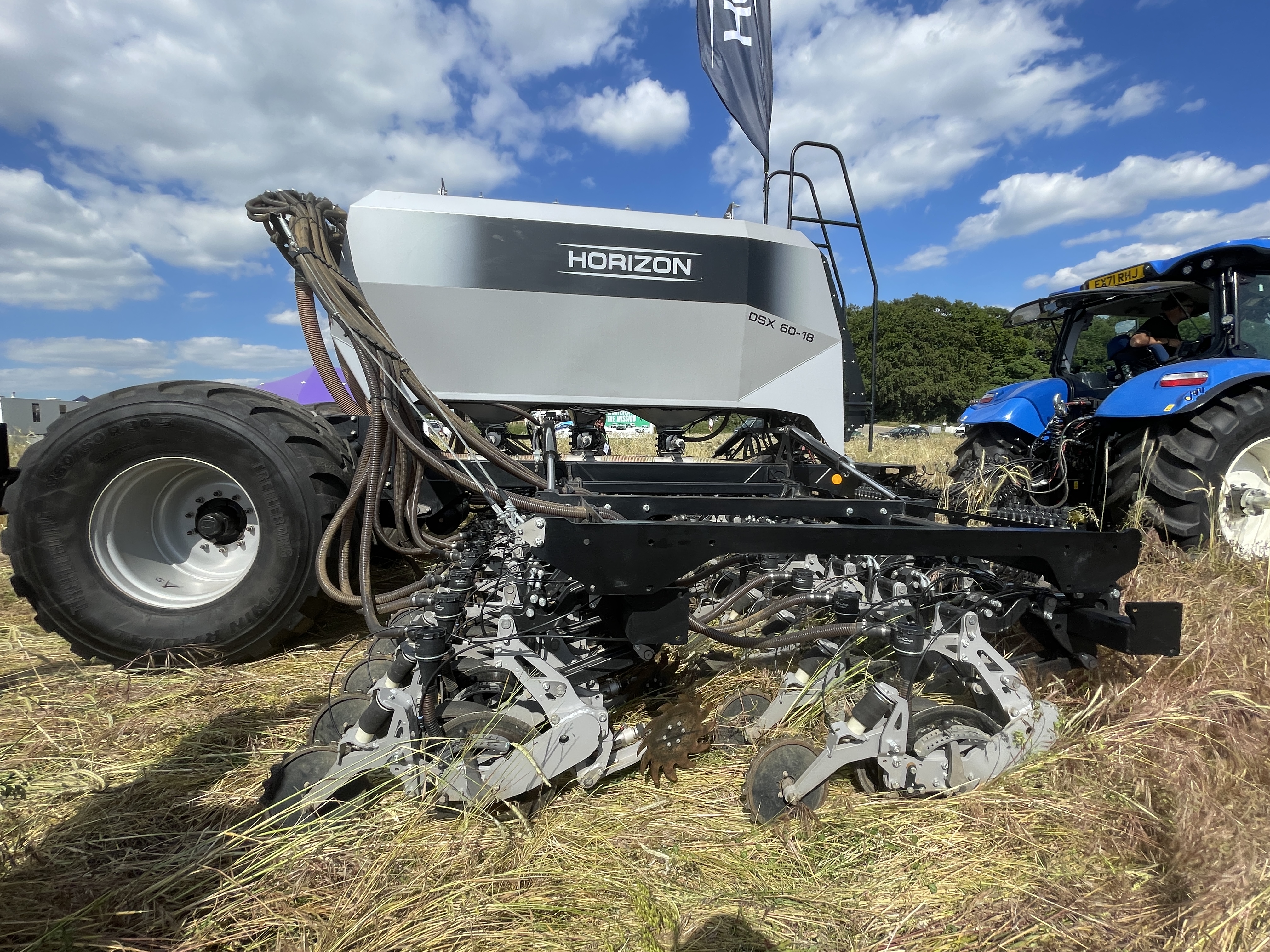
“This is a newer drill that everyone is talking about,” according to Chris. “It’s high-tech and really good for seed depth.”
The Horizon DSX has been designed as a modular drill that starts as a 4m drill which can be extended with optional modules. The undercut disc is designed to deliver consistent seed placement and being angled should require less downforce to help minimise compaction in the soil surrounding the seeding zone. The coulters are on a parallel linkage which offers 300mm of contour following travel.
![]() Horsch Sprinter
Horsch Sprinter
The Horsch Sprinter is probably one of the most popular tine drill, according to Chris.
The coulters of the Sprinter ST have a trip release system, requiring more than 200kg of force in order to set off, which should provide a consistent seeding depth.
A wide range of openers can be employed to allow seed rate and seed spacing flexibility from very narrow rows to wide bands. The coulters place the seeds in bands and a harrow provides even soil coverage (except for Sprinter 8 ST/12 SW). Finally, each seed band is consolidated with a tyre packer (tractor treaded tyres) to guarantee good seed-to-soil contact.
Dale Drills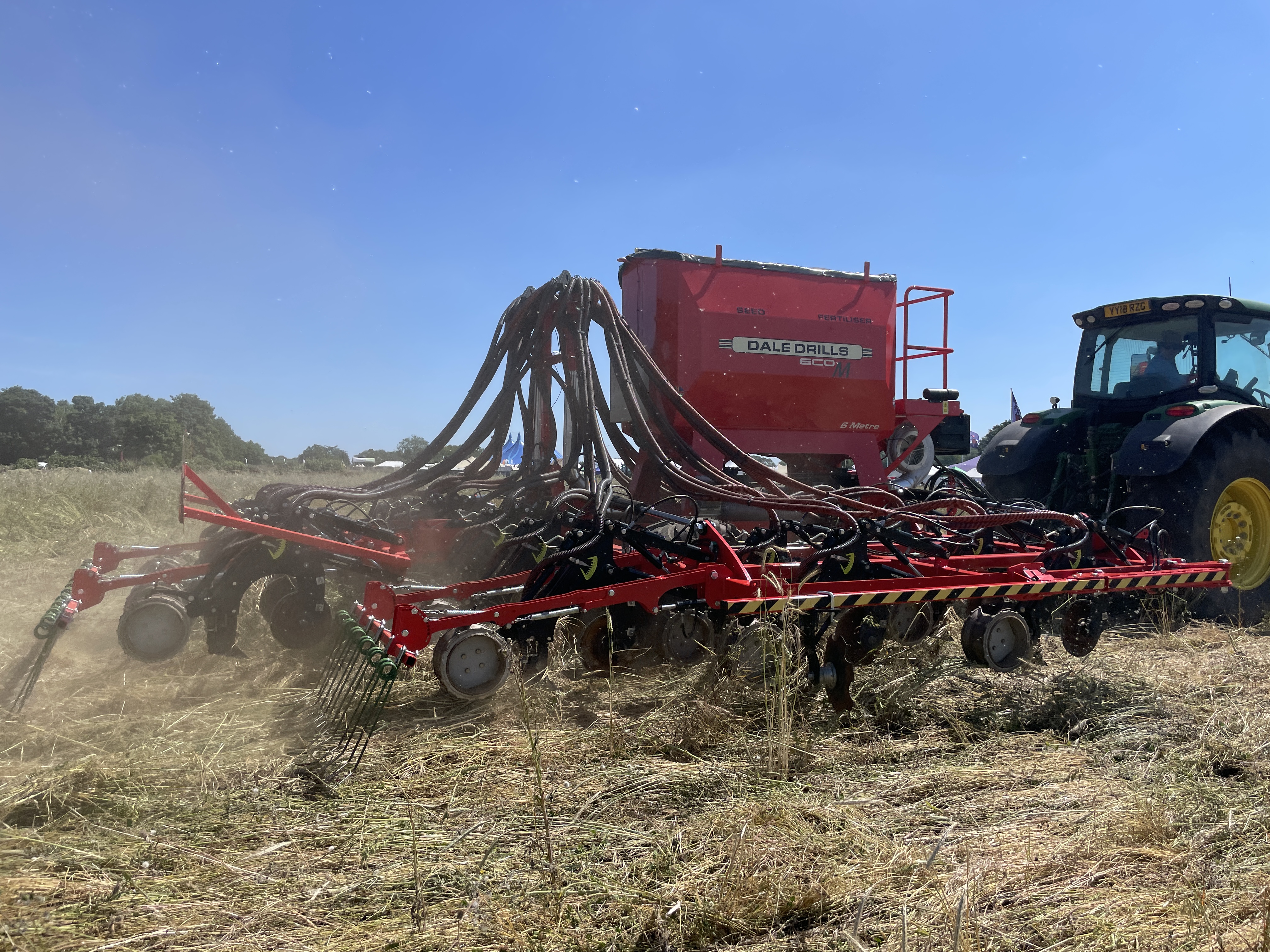
“Dale tine drills can be configured to narrow row spacings,” says Chris. “This is very useful for mineralising more nitrogen and improving crop establishment. But one downside is that moving a lot of soil when drilling increases the risk of grassweeds, so it’s important to achieve good stale seed beds before any drill which is likely to move soil.”
The range of Dale Drills are designed to allow farmers to direct drill, sow into min-till and conventional seedbeds. They have a modular design allowing for width increases which can suit controlled traffic systems.
This article was taken from the latest issue of CPM. For more articles like this, subscribe here.

